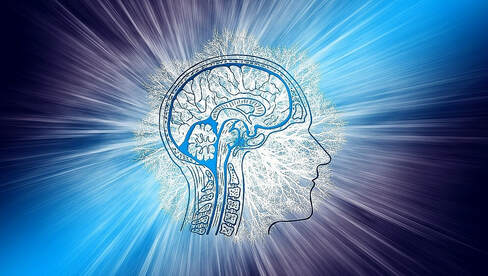 People think about intelligence based on its association with the extremes. On one side there are individuals who achieved fame for excelling in their fields. So clearly Nobel Prize winners like Albert Einstein or millionaires like Warren Buffett are very intelligent. These are the geniuses. At the other end of the scale, there are individuals who struggle with the intellectual challenges of everyday life. These people (in these enlightened times) are said to have “intellectual disabilities”. And in between these extremes you find people who are able to function normally and excel to a lesser or greater extent in their communities, their work, and their social life. These are people like you and me: the average folk. To most people, it seems obvious that there is a significant difference in intelligence between the average folk and the geniuses, or between the average folk and those with intellectual disabilities. It also seems equally obvious that these differences have real-world consequences. These are notions that most people accept. What is unwarranted, however, is the next level in this sequence of reasoning. This is the notion that, just as there are significant differences in intelligence between the extremes and the middle that have real-world consequences, there also are differences in intelligence among average folk that are significant and have similar consequences. If this were just merely a notion, there would not be an issue, but because intelligence is what makes us unique among all living things, we are fascinated by it. We want to know what it is. We want to define it. We want to grasp it. We want to dissect it. We want to measure it. We want to reproduce it. In order to do this, we have to assume that intelligence is something tangible that can be defined, grasped, and measured. Through several iterations in our attempts to quantitate intelligence (that have included the likes of follies such as cranial capacity) we have arrived at the notion that intelligence is the ability to solve problems, and therefore that intelligence can be “measured” by how well a person performs in solving a series of problems presented to them: the so-called intelligence tests. These tests were originally conceived to identify students who required extra help in school environments, not to ask how intelligent these children were. The tests were also used to gauge whether therapies or interventions were being successful at improving the students’ conditions. However, soon versions of these tests began to be applied to adults and otherwise normal individuals, and were used to produce a single number which would rank people from least to more intelligent. Here is where the problems arise. The general public has to understand that intelligence tests have two serious limitations when it comes to the assessment of intelligence. One limitation of these tests is that they are not useful for assessing differences among otherwise normal individuals or groups of normal individuals. A large difference in intelligence test scores between a genius and an average person has an obvious interpretation (the genius is more intelligent), but a smaller difference in intelligence test scores among average individuals cannot be interpreted so readily in terms of their real-world impact. It has been found, for example, that among people with equal levels of education, the performance in intelligence tests is a poor predictor of job performance, occupational standing, earnings, or wealth. Nevertheless, it is telling that we often associate being intelligent with being famous, amassing a fortune, or winning a Nobel Prize. However, what about being a moral and ethical individual, being a good parent, being active in the community, being a good friend, organizing for social action, etc.? A person who excels in these activities may not be labeled a genius or become rich or famous, but can anyone seriously argue that having the intellect to be successful in these activities does not require a substantial amount of intelligence? This issue leads us to the second and most serious limitation of intelligence tests, namely the fact that they only assess a limited aspect of what we call intelligence. There is strong evidence that human intelligence is not one thing, but rather that it is made up of several independent components which are in turn associated with multiple brain operational networks. This means that intelligence is an emergent property of several human abilities, and it cannot be reduced to a single number that measures how intelligent someone is. For example, someone can be very intelligent and use this intelligence to figure out how to rob a bank, make an illegal drug, or kill a person. However, many would argue that doing these things is very unwise. Shouldn’t wisdom be considered part of intelligence? Another example is sociability. What about people that know how to fit in and get along with others? What about people who know what to say, when to say it, where to say it, how to say it, and whom to say it to? There are very smart individuals that are socially awkward or disdainful of others they regard as inferior and unable to fit within a social structure or work in a team. Should sociability be considered part of intelligence? The representation of a person’s intelligence that we obtain from intelligence tests is at best incomplete and at worse biased. In fact some researchers in the area of intelligence think that the only thing intelligence tests evaluate is how well you perform at taking intelligence tests! 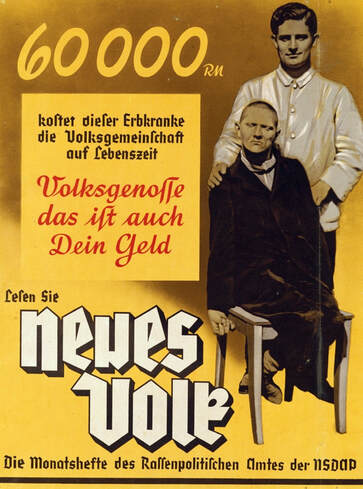 Nazi poster highlighting the high cost of caring for people with hereditary illness Nazi poster highlighting the high cost of caring for people with hereditary illness Because intelligence is so central to the human species and because of the notions that most people harbor about intelligence, the potential for the misuse of intelligence test results is great. Very few people would argue that it is not desirable to be more intelligent, and there is a stigma associated with being in the low end of the intelligence spectrum. Remember that individuals with intellectual disabilities were once formally referred to as “idiots”, “imbeciles”, or “morons”. Most people consider the opposite of intelligent to be “dumb”. These people also believe that “less intelligent” is synonymous with “dumber”. When groups of people are found by intelligence tests to score lower than other groups, in the eyes of many the lower scores implies “dumber”. Once that step is taken, the transition from “dumber” to “inferior” is all too easy and common. And from here, the dark and twisted history of our efforts to assess intelligence has produced abominations ranging from forced sterilization of individuals and restrictions in immigration in countries like the United States, to outright killing of those judged to be feeble minded in places like Nazi Germany. Even today, intelligence testing differences among races are being used to argue for the intellectual superiority of one race over others. Research into the nature of intelligence is a valid scientific endeavor, and the restricted application of intelligence tests to very specific situations can be beneficial. But expanding the application of intelligence tests to otherwise normal individuals coupled with inaccurate notions harbored by the general public regarding how these tests work and what they mean, can fuel discrimination and racism. It has happened in the past and it can happen again. The brain image from Pixabay is free for commercial use. The Nazi poster by the Neues Volk ("New People") magazine published by the Rassepolitischen Amt der NSDAP (Office of Racial Policy of the Nazi Party) around 1937 is in the public domain.
0 Comments
 Many people are rightfully disgusted with the way we treat our planet. Our carbon emissions are producing a warming of the Earth’s climate that will lead to catastrophic changes to the planet’s fauna and flora. Our trash is piling up in the oceans causing the slow and painful death of countless sea creatures. And urbanization, industrialization, and farming are polluting the air and the water affecting wildlife and causing dead zones in the seas. Some argue that human beings must return to a lifestyle in “harmony with nature”. But what exactly is meant by “being in harmony with nature” is not clear. Does it mean engaging in outdoor lifestyles, meditating in the woods, or adopting one of those Mother Earth philosophies? Does it mean recycling, driving electric cars, and going vegan? Or does it mean giving up electricity, computers, cars, and airplanes, and living in log cabins? Even though I don’t know what “living in harmony with nature” means for human beings, I know what it means for other living things. If you want to know too, I encourage you to watch not the cute lovey-dovey videos of animals who are otherwise mortal enemies in nature frolicking with each other as a result of human intervention, but any of a number of grisly predator-prey videos in the internet where living things are dismembered, disemboweled, or eaten (many while still alive). This is what nature is: no rights, no morals, no ethics, no laws, no religion, and no values. It’s dominate or be dominated, kill or be killed, eat or be eaten, and fight or flee to survive just to die another day. Nature is predators, fear, pain, and suffering. Nature is wounds, infections, parasites, and parasites of parasites. Nature is the purest form of “life’s a bitch and then you die”. Do you want to be in “harmony” with that? For all living things except human beings, “living in harmony with nature” is being part of this system. Nature is not antibiotics, antivirals, antifungals, vaccines, drugs, medical checkups, or surgery. Nature is no artificially extended lifespans and access to technology that allows us to overcome the limitations of our biology. There are hundreds of millions of people (including yours truly) who are alive today and free of suffering because we are not in harmony with nature. Some people would argue that I am being ridiculous, that “being in harmony with nature” does not mean abandoning our modern civilization, going back to the forest, and trying to outrun the wolf pack. These people would argue that instead “being in harmony with nature” means something like using green energy, reducing the use of plastics, the consumption of livestock, and other such strategies. Well, if you have read my blog, I am all for that, but in my opinion this is not “being in harmony with nature”. Here we may be arguing about semantics, but I think that we cannot be in “harmony with nature” in the most obvious meaning of this phrase because the very premises on which we base and define our existence (think for example “rights”) are at odds with the natural order according to which all living things but we live. There are also practical considerations. For example, the total amount of energy that a single human being in the United Estates consumes in one year is 303 million BTU per year. BTU means “British Thermal Unit”, and is roughly equivalent to the amount of energy released when you light a match. By comparison a male elephant weighing 5 tons consumes 82 million BTU per year. There are now 7.3 billion people on Earth. Our worldwide consumption of energy is 575 quadrillion (that is 15 zeroes) BTU, and the processes by which we generate this energy, such as burning fossil fuels, are damaging our planet. Can we replace these energy-generating processes with green alternatives? Maybe, but it will be a challenge. At this point, some people would agree with me that indeed we human beings have placed ourselves outside the checks and balances of nature, and because of this we are harming our planet. They argue that, unlike natural populations of living things, humanity is growing unchecked like a cancer overrunning the Earth. They feel human population growth and activities must be restrained. Some even suggest in ominous whispers that “the herd must be thinned”. Not so fast. Human beings have a brain that is a product of a natural evolutionary process, and this brain has allowed our species to gain an understanding of the universe that no other living thing has ever achieved. Because of this we can recognize that our way of life is harming the planet. A cancer is not capable of understanding that it is killing the body that sustains it, but we are, and we can do something about it. For example, when it was recognized that the use of certain chemicals was depleting the ozone levels in the atmosphere, the nations of the world agreed to ban ozone-depleting chemicals in 1987 in the treaty known as the Montreal Protocol. Another example is when it was recognized that the testing of nuclear weapons represented a danger to human beings and the environment. As a result of this, the testing of nuclear weapons in the atmosphere, under water, and in space was banned in several treaties signed and ratified over the years. So to recap, I don’t believe that humanity can be (or will want to be) in “harmony with nature”. However, I do believe that humanity as a whole is not a destructive entity with a one-way ticket to oblivion. We will be able to change our ways, minimize our environmental impact, and persevere. We have adapted in the past, and we will do it again in the future. The image from Pixabayis is free for commercial and noncommercial use. 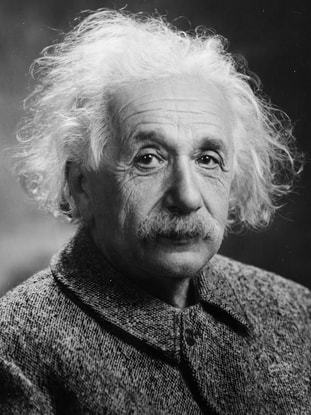 Albert Einstein Albert Einstein When many people think of scientists, images such as that of Einstein come to mind. Einstein and other scientists in his league asked important questions regarding the nature of reality in order to discover its underlying principles. However, individuals like Einstein are the exception rather than the rule with regards to what most scientist do. The majority of scientists are involved in the application of science to answer very specific and practical questions. Is this drug safe? Is this water sample polluted? What illness does this patient have? Did this gun fire this bullet? These are all questions that are not likely to get you a Nobel Prize anytime soon, but their answer is of vital importance to our society. In fact, many scientists are involved in professions that do not necessarily even require the performance of experiments on a regular basis or at all. Additionally, science has become such a fiendishly complicated enterprise that many individuals that do not intend to become hard core scientists nevertheless need to study and train for many years even up to the Ph.D. or postdoctoral level to acquire an acceptable degree of mastery in the subject. This post is about these other scientists. Doctors: Although all doctors are trained to be scientists, not all perform research. From general practitioners to specialists, many doctors set up or join private practices and dedicate themselves exclusively to servicing their patients, thus fulfilling an important function in society. Quality Control Scientists: The job of quality control scientists is to test each batch of a manufactured product to make sure it conforms to established parameters. In quality control, the procedures used to test new batches of products must the performed in the same way, day after day, month after month, and year after year. Data and procedures have to be meticulously recorded. Equipment and assays have to be fine-tuned and calibrated. The lives of people and millions of dollars in company resources depend on quality control scientist doing their job right. Forensic Scientists Forensic scientists apply the methods of science to analyze physical and chemical evidence to solve crimes. From fingerprinting, entomology, and botany, to toxicology, pathology, and DNA analysis, many disciplines of science converge to help in fighting crime and evaluating the culpability of suspects. Scientific Reviewers: Every year there are billions of dollars in public and private funds allocated for research, and there are thousands of research proposals that request these funds. How do funding agencies decide which proposals to fund? Here is where a type of scientist known as a scientific reviewer comes in. Scientific reviewers organize and conduct meetings with scientists, who are experts in their field, to review and score grant proposals. These scientists play an invaluable role in the process of allocating millions of dollars in public and private funds for research. Patent Attorneys: Individuals and corporations want to protect their discoveries by writing patent applications to the government or defend their patents in court when they have been infringed. Patent attorneys are involved in the process of writing patents and in disputes over patent rights. Some scientists, after obtaining their degree in science, choose to pursue a law degree to become patent attorneys. The scientific background allows them to understand the complexity and nuances of the subject matter they encounter, and to argue cases to juries and judges. Patent Examiners: Hundreds of thousands of claims are made every year to the government requesting that new inventions and procedures be protected by the awarding of a patent. The type of protection afforded by a patent is vital for the viability of many industries. But how is the government to know which patent request should be approved? This is the job of patent examiners. Patent examiners are scientists who search the available scientific literature and related databases to evaluate which claims should receive patent protection. Regulatory Scientists: The process by which scientific discoveries result in practical applications involves following many rules at the municipal, state, and federal levels and requires a lot of oversight by regulatory agencies. There are tens of thousands of regulatory scientists involved in making sure that scientific products such as drugs or medical devices are effective and that they are produced in a safe manner. Science Writers: Another important and versatile scientific activity is science writing. There are scientists who write the technical specifications of products made by companies. Others are involved in writing up the presentation of the company’s products to consumers. Some scientists write applications for the approval of products by regulatory agencies, while other scientists edit articles to be published in science journals. Still other scientists are involved with writing grants or writing for publications or broadcast outlets that inform the public about the latest scientific discoveries or controversies. Teachers: As science becomes more complex, teachers are obtaining advanced degrees or training in science, and scientists are obtaining teaching degrees to be teachers. In an age where science is having incremental impacts in our lives with each passing year, it is important to teach new generations about the ways of science. I could go on, but the foregoing gives you an idea regarding the breadth of the applications of science in our society and the diversity of its practitioners many of whom do not necessarily engage in the classical image of the scientist asking big questions, making Earth-shattering discoveries, and winning the Nobel Prize. Not everyone is an Einstein, and that’s OK. The photograph of Albert Einstein by Orren Jack Turner obtained from the Library of Congress is in the public domain because it was published in the United States between 1923 and 1963 and the copyright was not renewed. The Big Bang Theory is one of the highest quality sitcoms I have ever seen due to its superb acting, screenwriting, filming, editing etc. I also like the fact that the show features a lot of science and technology, but I treasure it mostly because it is a show about nerds, their quirks, and their struggle to deal with the social minefield of modern society. Being a nerd myself, I can relate to the characters in the show. I knew people like Sheldon Cooper, Amy Farrah Fowler, Leonard Hofstader, Howard Wolowitz, Bernadette Rostenkowski, and Raj Koothrappali, as well as people who were perplexed when interacting with them, like Penny. Since the Big Bang Theory has ended, I thought I would write a blog post with my list of the best episodes, but the problem is that everyone and his dog is doing that. So, instead I present to you here the 5 best Big Bang Theory Nerd themes and the episodes that best exemplify them. Note that because these are themes and each episode features more than one storyline, some episodes are included in more than one theme. In each entry “S” refers to the season, and “E” refers to the episode. Spoiler Alert! Before you keep reading please note that I need to reveal some aspects of the episodes to properly present the themes. 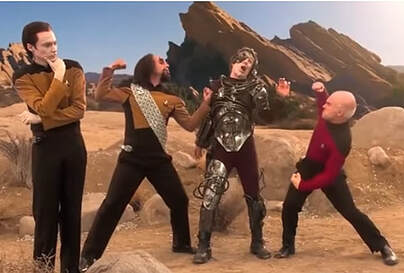 The Bakersfield Expedition The Bakersfield Expedition The Fiction, Science Fiction, Fantasy, Comic Book, Gaming, and Movie Lore Theme Like any good show about nerds, the Big Bang Theory features cultural items related to fiction, science fiction, fantasy, comic books, and gaming. Some of the top episodes representing this theme are: The Bakersfield Expedition (S6, E13): The guys head to a comic book convention dressed as Star Trek Next Generation characters, but it turns into a fiasco. The ladies, on the other hand, stay home pondering about the seemingly stupid things that the men in their lives like. The Love Spell Potential (S6, E23): After a failed attempt to get to Las Vegas, the ladies join the guys to play a raucous game of Dungeons and Dragons that is a must see! The Barbarian Sublimation (S2, E3): Penny’s apparent failure in life leads her to become addicted to a role playing game, which is something that many gamers can relate to. The Creepy Candy Coating Corollary (S3, E5): Sheldon participates in a Mystic Warriors of Kaa card tournament so he can get revenge at being let down by former idol Will Wheaton (Star Trek: The Next Generation), but needless to say things don’t go as planned. The Precious Fragmentation (S3, E17): A ring from the Lord of the Rings movie exerts a dark influence upon our heroes. Indeed, one ring to rule them all, one ring to find them, one ring to bring them all, and in the darkness bind them.  The Bath Item Gift Hypothesis The Bath Item Gift Hypothesis The Socially Awkward and Incompetent for Anything but Science Nerd Theme The trope of the socially awkward nerd has been the butt of many jokes, but in the show Sheldon takes this concept to new heights. The Bath Item Gift Hypothesis (S2, E11): Sheldon is forced to deal with the seemingly hopeless complexity involved in reciprocating Penny for a gift she has obtained for him. The final scene of the episode is one of the most loved moments in the Big Bang Theory. The Euclid Alternative (S2, E5): This episode documents Sheldon’s unwillingness and inability to learn to drive. In the end he doesn’t give up, but merely “transcends” the situation. The Egg Salad Equivalency (S6, E12): Sheldon gives his female assistant Alex some advice on how to handle what he perceives as her “urges”. He naturally ends up reported for inappropriate behavior to human resources, but that’s only the beginning of the debacle. The Adhesive Duck Deficiency (S3, E8): Sheldon clumsily comes to Penny’s rescue after she falls in the shower hurting her shoulder. The relevant quote from the episode is: “The hero always peeks.” The Friendship Algorithm (S2, E13): Sheldon tries to come up with an algorithm for making friends. Leonard states that there is no such thing, but Howard says, “Hear him out. If he is really on to something, we can open a booth at Comic-Con and make a fortune!” 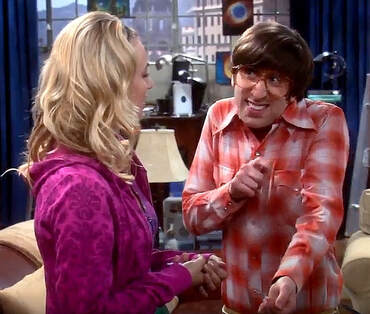 The Killer Robot Instability The Killer Robot Instability The Creepy, Sex-Starved, Pathetic Nerd Theme What is a nerd to do when his mating calls go unanswered? Howard is involved in the best episodes exemplifying this theme. The things he does range from the merely pathetic and ridiculous, to the truly objectionable. The best episodes are: The Killer Robot Instability (S2, E12): The guys build a robot to participate in a robot jousting tournament, but Howard crosses the line with Penny, and she rightfully puts him in his place. Howard retires to his room to cry, and the guys are left without their engineer to face a robot duel challenge from coworker Barry Kripke. In this episode Kripke delivers the most memorable line in all of Nerdom regarding the unsuccessful travails of the Nerd in his quest for affection. The Panty Piñata Polarization (S2, E7): Using a military spy drone that he diverted from its mission, Howard tracks the house of the babes participating in the show America’s Next Top Model. Does the end justify the means? Yes, he IS creepy. The Hot Troll Deviation (S4, E4): Bernadette learns that Howard’s character in the role playing game World of Warcraft was having sex with a Troll, and breaks up with Howard. To add insult to injury, Howard’s solitary bedroom fantasy with Katee Sackhoff (Battlestar Galactica) is interrupted by an unlikely character. The Robotic Manipulation (S4, E1): Howard uses a robot hand to, uhm…”address his love blues”, but a glitch in the technology leads to some unforeseen consequences. The Hofstadter Isotope (S2, E20): After seeing Penny leave on a date with Stuart, Leonard asks Howard to take him to a bar with women. Howard tries to teach Leonard the basics of his method. It involves letting the lawyers and jocks thin the herd and then going after the weak, the old, and the lame. 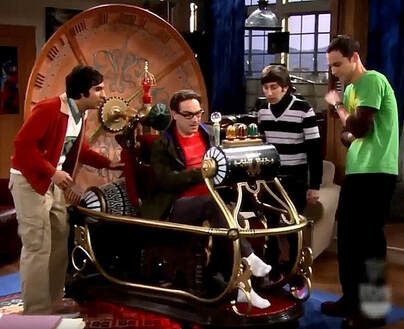 The Nerdvana Annihilation The Nerdvana Annihilation The Juvenile Nerd Theme Nerds and scientists in general are often perceived to age more slowly than the general population displaying juvenile behavior well into adulthood, and often suffering the consequences of not knowing their limits. This is nicely addressed in several episodes in the show. The Nerdvana Annihilation (S1, E14): The guys unknowingly purchase a real size time machine prop from a 1960s movie that messes up Penny’s day. So she lets them have it: “My God, you are grown men! How can you waste your life with these stupid toys, and costumes, and comic books...pathetic, all of you, completely pathetic!” (Ouch). The Hot Troll Deviation (S4, E4): Raj installs a “brobdingnagian monstrosity of a desk” in the office he shares with Sheldon, and this escalates into a full-fledged conflict. The Transporter Malfunction (S5, E20): It’s a collector’s item. Opening it would destroy its value, but what is the purpose of a toy? To be played with. It’s only logical. You tell him Spock! The Einstein Approximation (S3, E14): Sheldon’s lack of sleep leads to one of the most memorable gags in the series showcasing his trademark expression: “bazinga”! The Pants Alternative (S3, E18): Sheldon has to give a presentation in front of too many people, so he drinks to develop some courage: very big mistake! 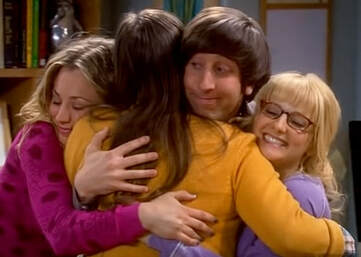 The Stag Convergence The Stag Convergence The Nerd Redemption Theme In the end, however, things do work out for most nerds. Not only do they find their soulmates, have a relationship, and settle into adult lives, but they also end up being better persons. Howard and Bernadette Howard goes through a few ups and down with Bernadette, but finally she agrees to marry him. However, during the bachelor party (The Stag Convergence: S5, E22) a drunken Raj reveals details of Howard’s seedy past that make Bernadette reconsider. Nevertheless, at the end of the episode, in one of the most beautiful scenes of the show, Howard reveals that he has abandoned his questionable ways for good because of her. 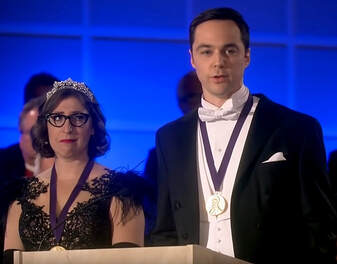 The Stockholm Syndrome The Stockholm Syndrome Sheldon and Amy (Shamy) The antics of Amy trying to make Sheldon more “human” and get him to show affection for her are one of the great sources of humor in the show. This effort goes at a snail’s pace from spanking (The Fish Guts Displacement: S6, E10), to kissing (The Locomotive Manipulation, S7, E15), coitus (The Opening Night Excitation: S9, E11), and marriage (The Bow Tie Asymmetry: S11, E24). But the true culmination of Sheldon’s transformation occurs in the very last episode while Amy and he are receiving the Nobel Prize. It’s there he realizes that those who love him have played a crucial role in his life (The Stockholm Syndrome: S12, E24). 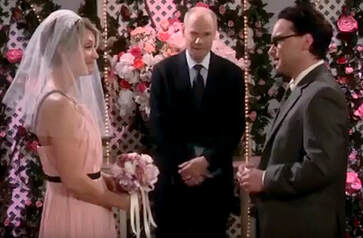 Leonard and Penny Whereas in the relationships I mentioned above it is mostly the guys who are improved, Leonard and Penny seem to elevate each other equally. Penny, who before meeting Leonard had had a string of dumb boyfriends, in one episode complains to Leonard that because of him she has lost her ability to tolerate idiots (The Lunar Excitation: S3,E23). However, Penny apparently has a hard time dealing with the notion that she is dating someone who is smart and cares about her, and she freaks out when Leonard tells her he loves her (The Wheaton Recurrence: S3, E19) or asks her to marry him (The Launch Acceleration: S5, E23). Leonard on the other hand falls hopelessly in love with her and struggles to deal with her ambivalence as well as her disinterest in the ways of science (The Psychic Vortex: S3, E12). But everything ends well, and they both finally tie the knot in The Matrimonial Momentum (S9, E1).  The Matrimonial Metric The Matrimonial Metric Amy and Penny Amy’s friendship with Penny turns Amy from a female version of Sheldon into a more normal human being. Not that Penny sees it that way. She finds Amy’s fascination with her somewhat disturbing. However, in the end she realizes that Amy is indeed her best friend (The Matrimonial Metric: S11, E12). 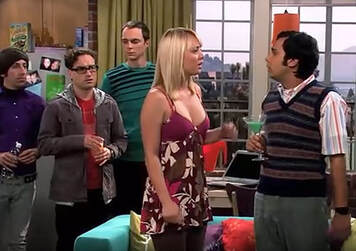 The Grasshopper Experiment The Grasshopper Experiment Raj Raj also experienced a lot of improvement during the show. At the beginning he could not talk to women, but he found he could overcome that by drinking (The Grasshopper Experiment: S1, E8), and then in The Bon Voyage Reaction (S6, E24) he was cured for good. However, the show ends without Raj having found his soulmate (I wrote: “for most nerds”). So what are your favorite Big Bang Theory episodes or themes? Leave a comment and let me know!
Note: My Blog is not affiliated with CBS, Chuck Lorre Productions or Warner Bros. I do not hold the copyright to material from The Big Bang Theory TV show. This post is intended to celebrate this great sitcom and promote it to people who have not yet seen it. As such, the screenshots employed here as well as quotes from some episodes are used under the legal doctrine of Fair Use. The reader interested in watching the show is encouraged to go to the CBS Big Bang Theory website and subscribe to watch the episodes. |
Details
Categories
All
Archives
June 2024
|
 RSS Feed
RSS Feed